The road from Erfoud to Todra Gorges with a stop in Ksar El Khorbat – Morocco
The road from Erfoud to Ksar El Khorbat
Short Description. I explored the khattara irrigation system in Majha Fezna. Near Tinejdad, I went to the Oasis Museum in Ksar El Khorbat and the Water Museum in Source Lalla Mimoun. Eventually, I spent the night in a camping ground near the entrance to the Todra Gorges.
Long Description.
After passing Erfoud – a small town with reddish houses, dusty streets, and women well-muffled-up in their headscarves and djellabas, I stopped at a big tent (khaima) near Majha Fezna village. There, two Bedouin brothers, Karim and Hamid, managed the visit to the underground irrigation system of the oases (khattara).
The khattara irrigation system consisted of a network of pits up to seven meters in depth. The main pit captured the groundwater, which was then hauled through an underground canal and irrigated the oases located 10-15 kilometers away from the mountains. The access pits were used for the construction and maintenance of the irrigation system. For example, you could climb down through a dark tunnel to one of the underground wells, where a bucket hung by a wooden lever.
Karim and Hamid were Bedouins from the Arabian Peninsula. They spoke Arabic and, before settling down, they had a nomadic lifestyle – they lived in a tent with donkeys and sheep. At the moment of my visit, they lived in the nearby village of Fezna and managed the visit to the khattara irrigation system. After the tourist groups left, they invited me to have tea with them. When they found out I would write a book about Morocco, they insisted on having a tajine with them for lunch.
From Majha Fezna, the road crossed a desert region where wicker fences prevented sandstorms from flooding the asphalt road. A shepherd cursed me when I took pictures of his sheep. Here and there, wild camels freely crossed through the scenery dotted with isolated palm trees and acacia trees.
A town near the desert, Tinejdad featured reddish houses, unpaved dusty streets, and small shopfronts on the ground floor of the houses. In the town center kids ran unbothered everywhere. At the exit from Tinejdad, a bridge crossed a river toward the fortified village of Ksar El Khorbat. In Ksar El Khorbat, an old mud-brick house had been partially refurbished as the Oasis Museum. In addition to that, the other part of the house hosted a traditional guest house.
Ksar El Khorbat – the oasis museum
As I had an ICOMOS membership card, the president of the local NGO asked the painter Rachid Bouskri to guide me through the museum and the dark underground streets of the ksar. Rachid had been painting for twelve years. He showed me his paintings and told me he studied French and arts in Meknes (one of the four Imperial Cities of Morocco) and graphic arts in Casablanca. Above all, he even had a few painting exhibitions throughout Morocco. However, his heart was in Tinejdad where he was born. There, the NGO sold the artists’ work and used the money to restore the ksar.
Ksar El Khorbat had been founded in 1860 and had 152 houses. Rachid showed me all the restoration works made by the NGO in the village: pavements, sewage, water, and electricity. Only 50 families lived in the ksar before the restoration works but after that 87 families moved there due to better living conditions. Nevertheless, not all inhabitants could pay for utilities. Some of them preferred to take water from the recently restored public well. In addition, approximately seven persons lived in a house, aside from animals (chickens, cows, sheep). The inhabitants named the streets after the name of the tribe living in that neighborhood (for example, Ait Irbiben, Ait Ikablin). Besides, 33 people worked in the Ksar El Khorbat NGO (museum, restaurant, and guest house), and most of them preferred to live in the ksar.
Cobblestone streets led to the central square (asarag) opening as a public space near the fortification walls of the ksar. The inhabitants of the ksar often met in the 3000-year-old square – the place where feasts (weddings, fairs, souks) and other celebrations took place. The mud-brick houses in the ksar had several floors with small windows and crenelated terraces on the last floor. In this environment, inner courtyards were the only way to bring light inside the agglutinated houses of the village. From place to place, streets went out from the dark gangways and you could see a bit of sky.
The Oasis Museum displayed local instruments, simple drawings, and old photos. It ingeniously explained the life, importance, and role of oases in the sub-Saharan region. Informative panels explained how carpets were woven on big looms and how ceramic vessels were baked in specially-built earth ovens. Also, many old prayer books were displayed in rudimentary shop windows. After visiting the museum, Rachid showed me Gite Ksar El Khorbat – an old house dating from 1860, entirely built of mud-bricks and refurbished as a guest house. The guest house had ten rooms, a minimal conference hall, and even a small swimming pool. All rooms displayed colorful Berber carpets, camel-wool blankets, and wrought-iron furniture.
After visiting Ksar El Khorbat, the president of the NGO and Rachid invited me to have lunch with them and even to stay overnight in their small guest house – Gite Ksar El Khorbat. They ate tajine for lunch while I had chicken escalope, yogurt with apples and date syrup, and then, typical Moroccan tea. The restaurant of the guest house (the place where caravans once stopped) featured a palm-tree garden and pergolas with colorful flowers.
Local people founded the Ksar El Khorbat NGO in 2004. Its president had worked in Spain and witnessed how cultural monuments were restored in Europe. In 2006-2007, they had a collaboration with the Architecture School in Barcelona. In the following years, they continued to bring students from Europe for the restoration of the ksar. Also, the president promoted the ksar as a tourism destination, but he did that only to small agencies to avoid mass tourism. Later in 2015, they organized the Solidarity Week, and many cooperatives came to sell their products at this event. As a result, they collected 600 000 euros at the event and invested the money in restoration works.
Sources Lalla Mimoun Museum – the water museum
After exiting Tinejdad, I craned forward to read the signpost pointing toward Sources Lalla Mimoun Museum. There, the calligrapher Zaid Abbou founded and built the Water Museum – his life work. He had collected exhibits for 29 years since he lived in Agadir. In 2002, he started to build the museum in his native region near Tinejdad but he completed it only in 2006.
The museum had four inner courtyards and each one captured a water spring from the area. Further, the complex featured terraces, pergolas, and small buildings, and it also displayed old wooden gates with comb bolts. In other words, the lock could be opened only by introducing a comb with a special kind of cogs. In the garden, several camel-hair Berber tents pictured the nomad life in the desert. Moreover, the museum also displayed old prayer books, the Koran, and even ancient texts written on papyrus and rolled inside reed trunks. In the last building, informative panels explained the construction techniques used to built houses of sun-dried clay-and-straw bricks, but also richly painted wooden beams and rafters.
In one of the courtyards, Zaid explained to me how they measured the irrigation time with a „water clock.” A bowl with a hole in the middle was filled with water and raised into the air. The water dripped out in a certain amount of time. This amount of time measured an irrigation time unit. So Zaid made a knot on a straw for each emptied bowl. Each family had the right to an irrigation time measured by knots on a straw depending on their social status and size of land.
When I entered the room displaying old books, I told Zaid how much I liked old books. He said he liked them too. Before I left, he unexpectedly gifted me a page from an old prayer book written in Arabic. He also wrote my name with distinctive calligraphy on the envelope.
Zaid made calligraphy with special inks, and each letter he drew had a meaning: love, freedom, and even a verse of the poet Khalil Gibran. Zaid sold a big calligraphy for 200 Dirhams and a postcard with a single letter for 50 Dirhams.
Tinghir was a typical Moroccan small town situated at the entrance to the Todra Gorges. After passing Tinghir, I stopped at a panoramic lookout point overlooking the oases preceding the gorges. The mud-brick villages mingled with the brownish mountains and rocky gorges in the backdrop. Abundant oases and cultivated land plots brought a verdant spot in the brownish monochromy of the scenery. In the parking lot overlooking the gorges, a Moroccan „allowed” me to take photos. After that, he told me I had to pay him 10 Dirhams for the parking (a vacant lot). I told him he should have informed me that from the beginning. Eventually, he gave up and left right away.
Women in the nearby village wore white, transparent veils as dresses or head coverings. A bit further, I stopped at Camping Le Soleil, situated near the entrance to the Todra Gorges. The camping site had simple pitches flanked by palm trees, a few Berber tents or mud-brick houses for rent, and a Berber restaurant.
If you want to read more about the road trip through Morocco, here are all the Travelogues from Morocco (x21).
Have you been to Morocco or plan to go there? Leave a comment below this post and tell me what you liked in Morocco or what you want to see there.
Want to subscribe to my travelogues? Just leave your email in the subscription form below, and you’ll be notified when I publish a new post.
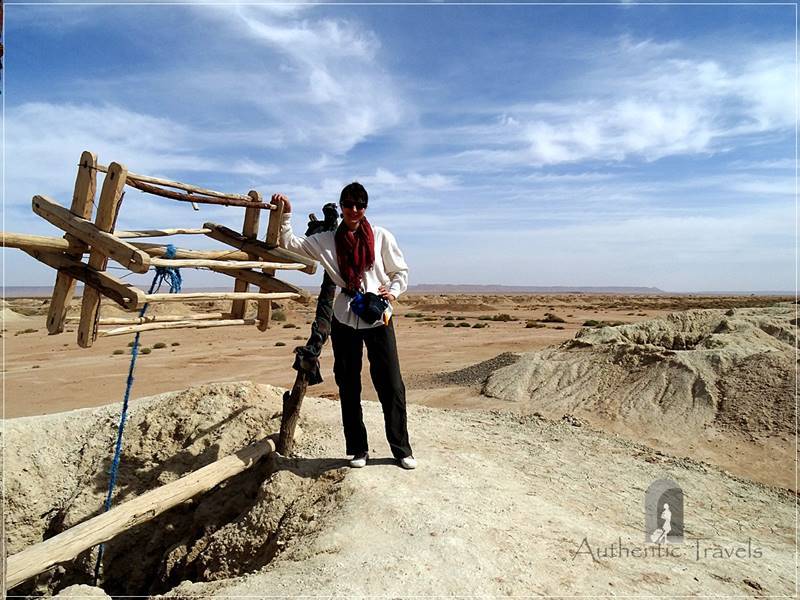
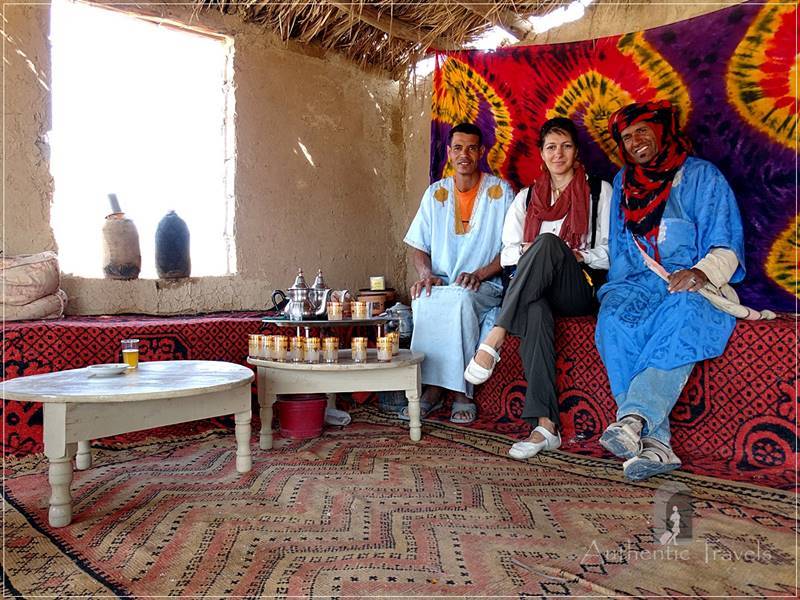
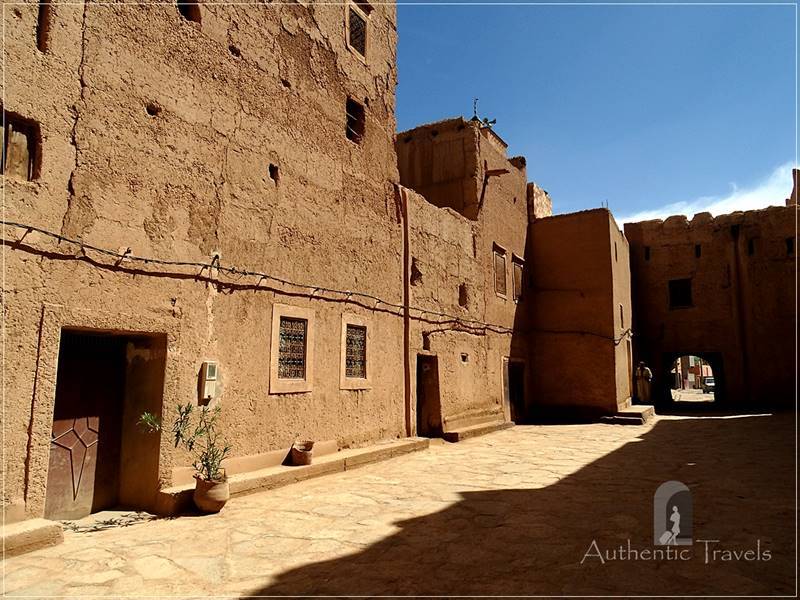
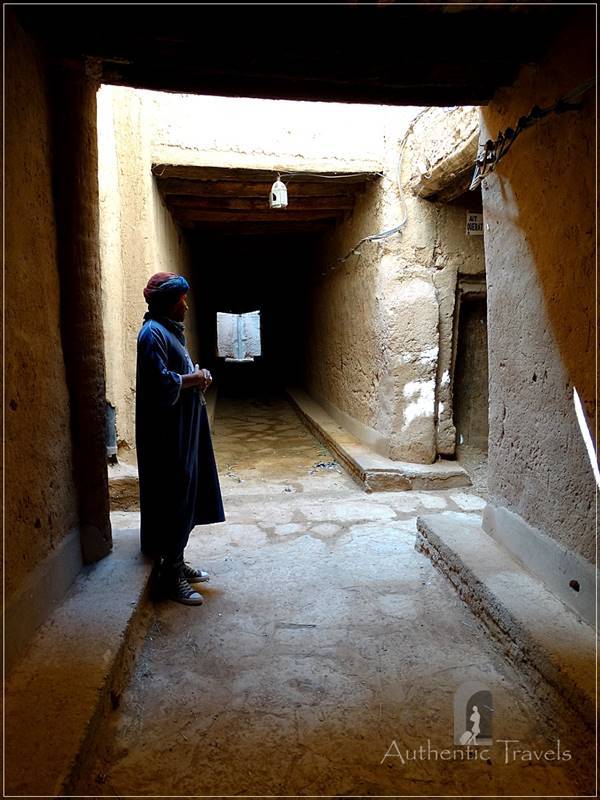
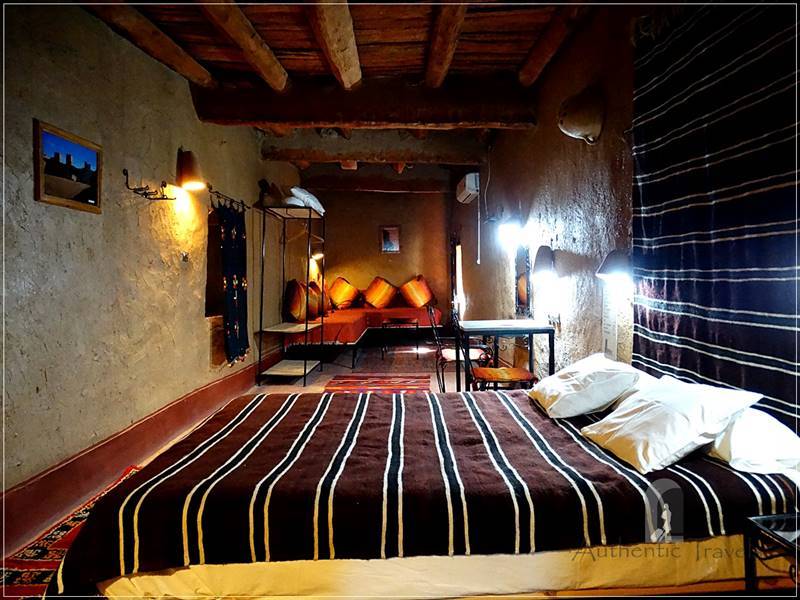
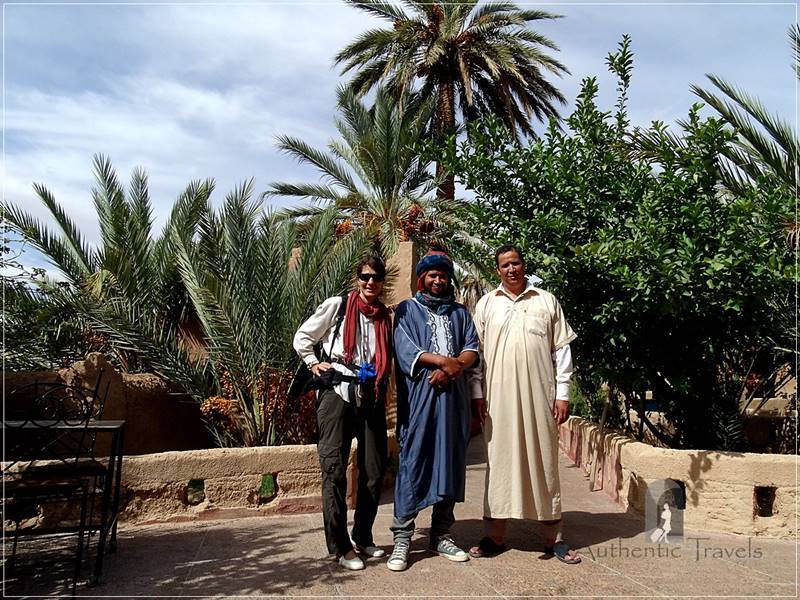
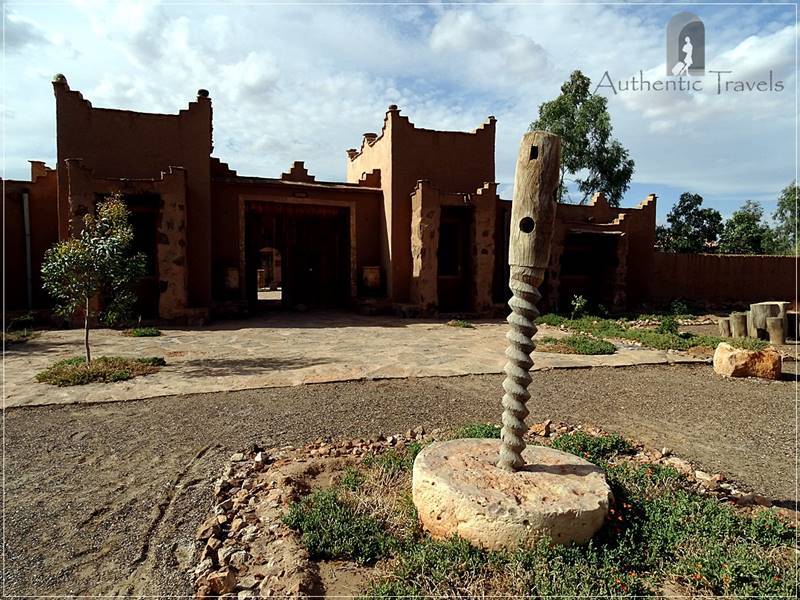
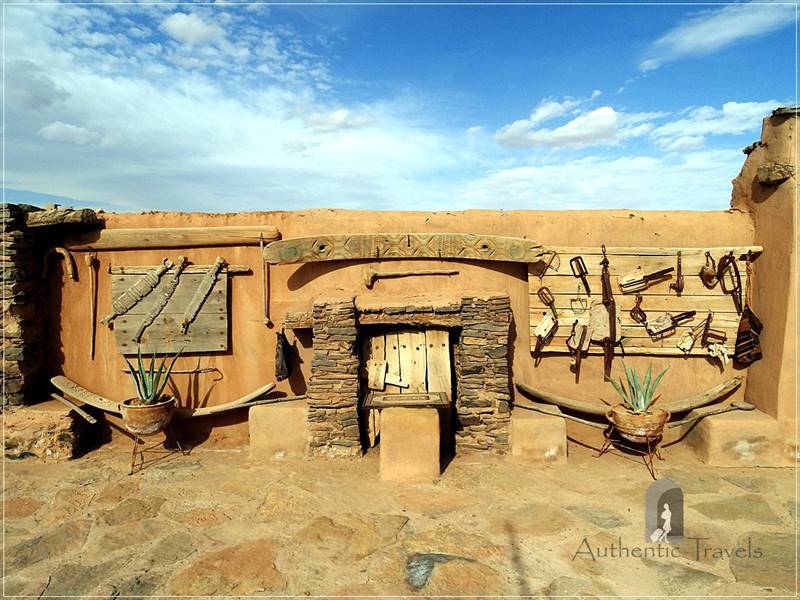
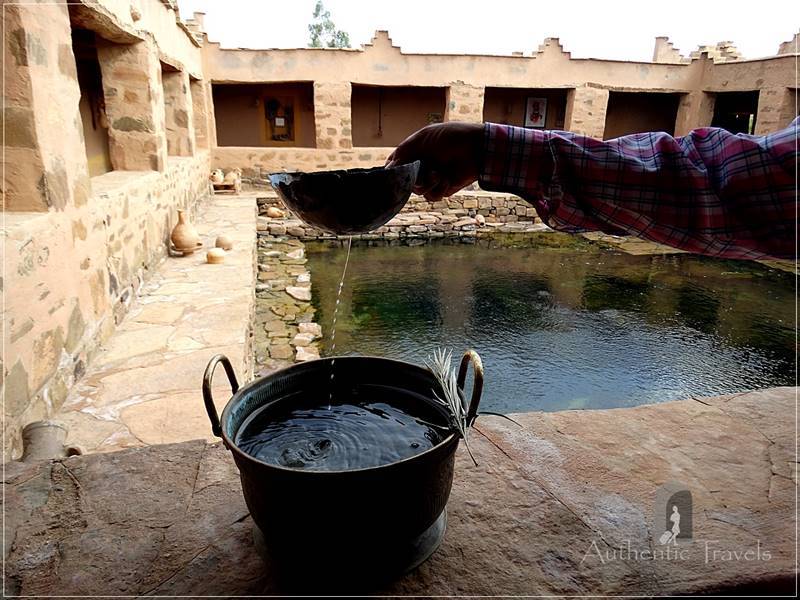
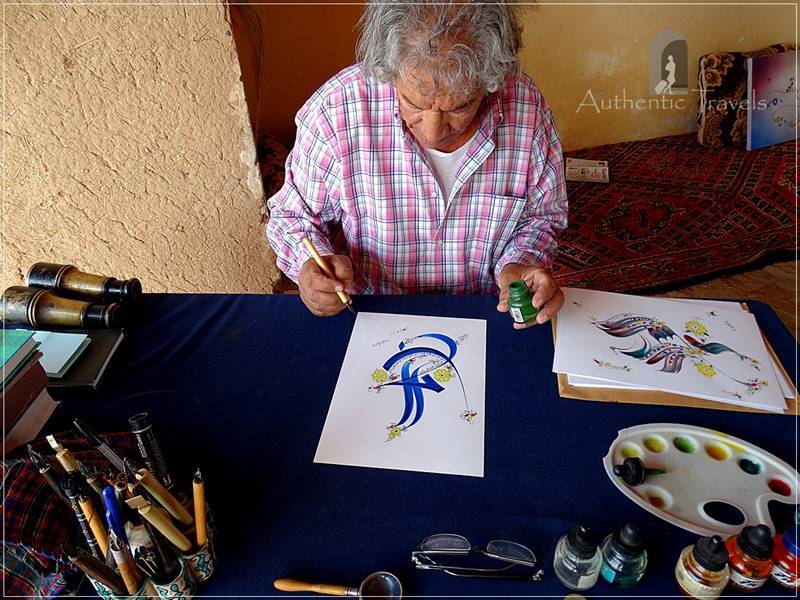
To be honest I have not heard of Ksar el Khorbat although I have come across several posts on Morocco. It does seem like a very interesting experience and the mud-brick houses dating more than 100 years ago are beautiful, they remind me of some of the old houses here in Dubai’s old city (where I live). How wonderful it must’ve been to chat up with the Bedouins.
Yes, I remember Bastakia in Old Dubai, however that one is a reconstruction, the buildings are not the old, original ones.
I was in Morocco just a few years ago, but didn’t get to do the exploration that I would have liked. This is a kind reminder that I need to make my way back here and do a bit more investigating. How incredible!
Unfortunately, I managed to see only half of Morocco. Next time I would like to head south of Agadir, as far as Dakhla if I am lucky.
I love Morocco and am currently in Taghazout. I haven’t been to Ksar or Todra Gorges, there is certainly so much more of this beautiful country I need to explore. You are so lucky that you got to experience these places and meet great locals who could share their life stories with you.
Ksar means village in Arabic, so many villages are called ksar Ait Benhaddou, Ksar el Khorbat etc
Before your post I hadn’t heard of Ksar el Khorbat. Morocco has always been a fascinating travel destination for me, and I hope to get there one day to experience some of this local culture. It’s nice that you had local guides and were able to explore some of these more remote areas.
It seems that in the smaller, unknown places people are more open and hospitable and look forward to showing you around, unconditionally.
When is your book on Morocco going to come out? After reading your blog posts on Morocco, I’m excited to hear more of your stories about this country! I love how you’re going to these off-the-beaten path locations. Do you find that you need to have a guide to tour these locations? I would love to stay at the Gite Ksar El Khorbat guesthouse. It’s rustic yet has a homey-feel to the room.
Unfortunately that book is going to be in Romanian … at least at the beginning. It would cost me too much to pay the proofreading in English. I am not a native English speaker so I have to start small and grow big. I toured Morocco with a rented car and used a Lonely Planet guide, I will soon post a Planning Morocco post and you will see there how I organized everything for myself.
Before your post I hadn’t heard of Ksar el Khorbat. Morocco has always been a fascinating travel destination for me, and I hope to get there one day to experience some of this local culture. It’s nice that you had local guides and were able to explore some of these more remote areas.
To be honest, I haven’t heard about Ksar el Khorbat either until I went there, it only had a brief description in the Lonely Planet guide, but nothing to have it on my must-see list. However, when I got there I was amazed how a small community could organize itself and restore a century-old ksar.
Wow! The Gite Ksar El Khorbat sounds crazy! When I think of a house built in that time period with that many bedrooms I always think they must have had a lot of money, and that it is some type of mansion or mini-mansion. Would that be the case for this region? THanks for sharing!
Well, this guesthouse was refurbished in an old building which was restored, so they had to adapt (and even built a rooftop swimming pool).
What a beautiful and unique experience I have read about Morocco. I’m glad you find both helpful, and they showed you kindness on these trips, and you’re able to share with us a unique experience in this place.
How sweet of him to give you a page of a paper in Arabic. What a unique souvenir!
Thank you for sharing your experienced with us!
I have had both unique and less fortunate adventures in Morocco. But people in general and nice everywhere.
Wow such a magical place with such a unique vibe of its own! Morocco is high on my travel wishlist so I’m really glad to have stumbled on your post here. It really brings alive the magic of Morocco and its people. You seem to have met some really kind and interesting locals there. That calligraphy looks beautiful and I love the tagline of your blog. Gibran is one of my all-time favorite writers.
I am glad you have liked my tagline because I am restructuring my blog so I have changed that tagline. Now it is my life motto but the site’s tagline will be related to trip planning which I offer.